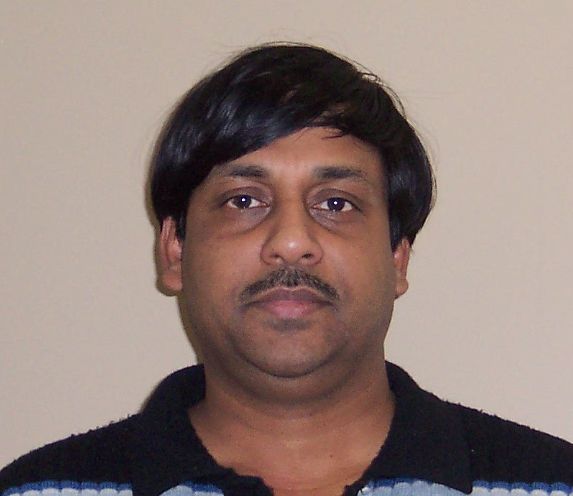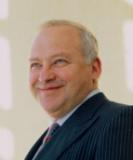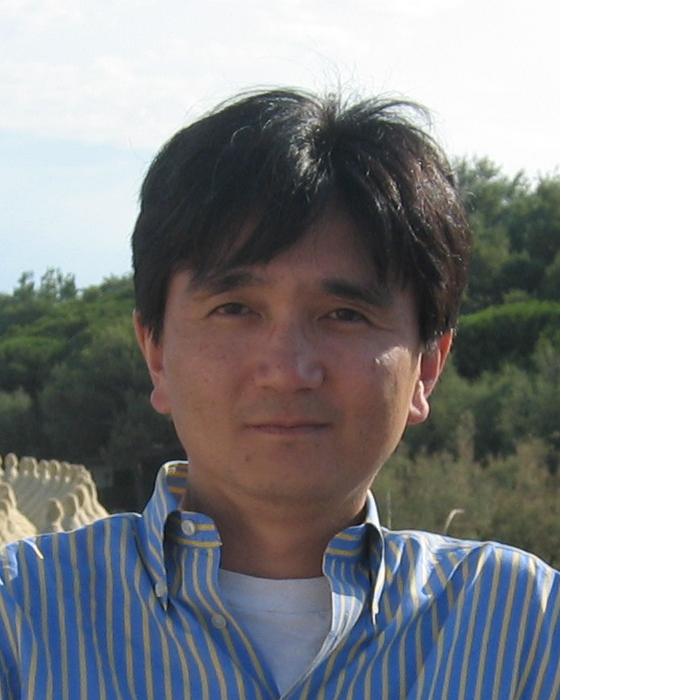
![[ICMU2008, JP]](img/icmu2008h.jpg)
The Fourth
International Conference
on Mobile Computing and Ubiquitous
Networking (ICMU 2008)
Miraikan, Tokyo Japan, June 11-13, 2008

Dr. Subir Das
Telcordia Technologies, Inc.
Dr. Subir Das is a Senior Scientist in Mobile Networking research department, Telcordia Technologies Inc. since 1999. Dr. Das received his PhD in Computer Engineering from Electrical and Electronics Communication Engineering Department, Indian Institute Technology, Kharagpur, India. From 1997-99, Dr. Das was a faculty member in the same Department. Dr. Das is currently leading several research programs in the area of Next Generation Wireless IP networking and ad hoc networking in Applied Research, Telcordia Technologies He has published more than fifty papers in the area of wireless IP networking. Dr. Das has four US patent to his credit and more than a dozen applications are pending.
He is a member of the TPC of several IEEE international conferences and a reviewer of IEEE JSAC, TMC, TON, Wireless Communication, Communication Magazine and Wiley Network Journal. Dr. Das offered tutorials in several leading conferences, including ICC, VTC, HiPC, and Percom. He is a lead contributor to IEEE and IETF Standards. He is currently the Vice-Chair of IEEE 802.21: Media Independent Handover Services working group. Previously he served as the co-chair of IETF PANA WG. His current research interests include architecture and protocols in wireless IP and ad hoc networks, mobility optimization in heterogeneous access networks, Fixed Mobile Convergence, IP Multimedia Service, and Security in wireless IP networks.

Dr. Hendrik Berndt
DoCoMo Communications Laboratories Europe GmbH
Hendrik Berndt holds the position as Chief Technology Officer and Senior Vice-President of DoCoMofs Communications Laboratories in Europe. In this capacity he is supporting DoCoMo Euro-Laboratoriesf research activities towards the next generation of mobile systems. Before, from 1998 to 2000, he held the position as Chief Technology Officer of the international Telecommunication Information Networking Architecture Consortium (TINA-C). As CTO, Dr. Berndt was chairman of the TINA Architecture Board and responsible for guiding TINA technology developments and products in the area of Multimedia Services, Distributed Processing Environment, IP Control and Management and open API's. Previously he held different managerial positions in the Telecommunication industry, such as Executive Director of Advanced Technology for Global One in Reston, Virginia and as invited member of Sprint's Office of Network and Architecture Planning in Kansas and had before more than 15 years experiences in several scientific and managerial position in the Telecom Industry in Germany.
Since 2000 he has been appointed as Visiting Professor at the Global Information and Telecommunication Institute, Waseda University, Tokyo, Japan. Currently he serves as elected Steering Board member of the e-Mobility technology platform initiative supported by the European Commission. He is member of the Board of Directors in the Object Management Group (OMG), headquartered in Needham, MA, USA and member of the curatorship of Fraunhofer Institute for Open Communication Systems Berlin. Additional he is an elected member of the research counsel of gMunchner Kreish, a non-profit supra-national association, dedicated to new communication system research.

Prof. Hiroyuki Morikawa
University of Tokyo
Hiroyuki Morikawa received the B.E., M.E, and Dr. Eng. degrees
in electrical engineering from the University of Tokyo, Tokyo,
Japan, in 1987, 1989, and 1992, respectively. Since 1992, he
had been in the University of Tokyo and currently a full
professor of the Department of Electrical Engineering at the
University of Tokyo. From 1997 to 1998, he stayed in Columbia
University as a visiting research associate. From 2002 to 2006,
he was a group leader of NICT Mobile Networking Group. His
research interests are in the areas of computer networks,
ubiquitous networks, mobile computing, wireless networks, photonic
Internet, and network services. He served as a technical program
committee chair of many IEEE/ACM conferences and workshops,
Director of IEICE, Editor-in-Chief of IEICE Transactions of
Communications, and sits on numerous telecommunications
advisory committees and frequently serves as a consultant to
government and companies. He received more than 20 awards
including the IEICE best paper award in 2002 and 2004, IPSJ
best paper award in 2006, Info-Communications Promotion Month
Council President Prize in 2008. He is a member of IEEE, ACM,
ISOC, IEICE, IPSJ, and ITE.
Two major properties will characterize Web 2.0 services:
'collection of contents' and 'collection of personal
information'. These two properties promise a computing
infrastructure that seamlessly and ubiquitously aids users
in accomplishing their tasks, and are the core of ubiquitous
network research and development. This talk begins by providing
a deployment scenario and roadmap of ubiquitous networks from
four viewpoints of 'from home to town', 'personalization',
'physical integration', and 'power consumption'. The
following section provides our ubiquitous network projects at
the University of Tokyo, and makes clear the challenges that
may very well require a fresh approach.
Sponsored
by
IPSJ SIG-MBL (Information Processing
Society of Japan, Special Interest Group of Mobile Computing and Ubiquitous
Networking)
Co-Sponsored
by
IPSJ SG-BCC (Study Group of Broadcast
Communication and Computing)
Supported
by
IPSJ SIG-ITS (Special
Interest Group of Intelligent Transport Systems)
and
IPSJ SIG-UBI (Special Interest
Group of Ubiquitous Systems Computing)